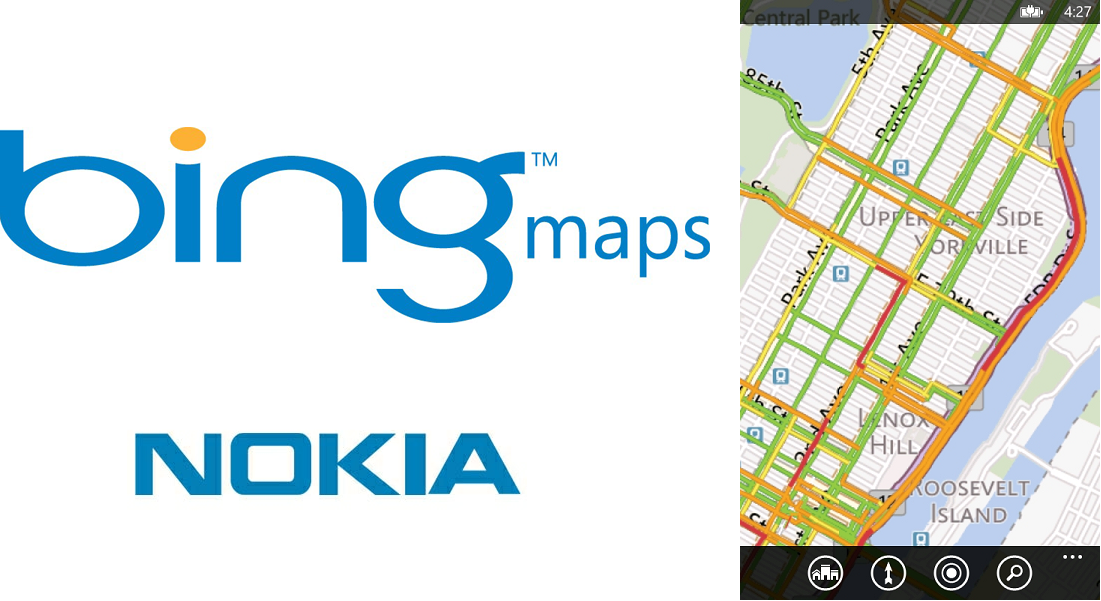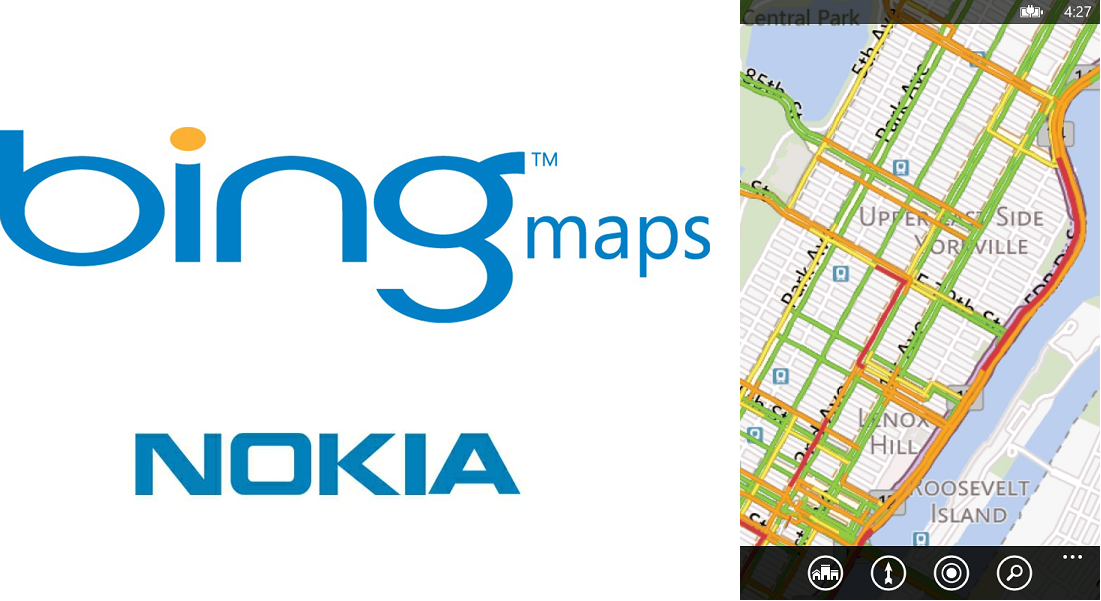Bing Maps now powered by Nokia for traffic and geocoding


Today Nokia has announced that their mapping data, specifically traffic info and geocoding ability (more on that in a bit) is powering Microsoft's Bing Mapping services. While this collaboration has been in the works since the Nokia-Microsoft partnership was announced, we're now seeing the results of it.
In short, if you launch your Bing Maps (either on the web or your Windows Phone) and enable Traffic, you'll notice two things right away:
- New color codes - green, yellow and red (maybe black?)
- More detail - Where once only major roads have it, now we're seeing our local streets with live traffic data
Nokia is now offering what was before only available in their Nokia Maps app to everyone who uses Bing. What's more, that info is available in 24 countries including Austria, Belgium, Brazil, Canada, Denmark, Finland, France, Germany, Greece, India, Indonesia, Ireland, Italy, Luxembourg, Mexico, Netherlands, Norway, Poland, Portugal, Russia, Saudi Arabia, South Africa, Spain, Sweden, Switzerland, UAE, UK and US.
Besides traffic, there's also geocoding which is something that's very important and here's why: geocoding algorithms take latitude and longitude information and connect them to a "readable address"--basically that whole ability to translate your GPS coordinates into a usable street number and name. Many apps use it, including what powers Foursquare or any app that sends your location e.g. WhatsApp. In theory now, it should be more accurate and help with directions too.
All in all this is great news for everyone on Windows Phone and anyone who uses Bing. We're looking forward to more of this Nokia-Microsoft partnership.
Read more at Nokia Conversations
Get the Windows Central Newsletter
All the latest news, reviews, and guides for Windows and Xbox diehards.

Daniel Rubino is the Editor-in-chief of Windows Central. He is also the head reviewer, podcast co-host, and analyst. He has been covering Microsoft since 2007 when this site was called WMExperts (and later Windows Phone Central). His interests include Windows, laptops, next-gen computing, and wearable tech. He has reviewed laptops for over 10 years and is particularly fond of 2-in-1 convertibles, Arm64 processors, new form factors, and thin-and-light PCs. Before all this tech stuff, he worked on a Ph.D. in linguistics, performed polysomnographs in NYC, and was a motion-picture operator for 17 years.
